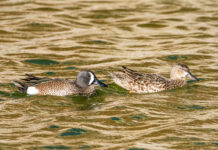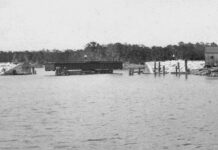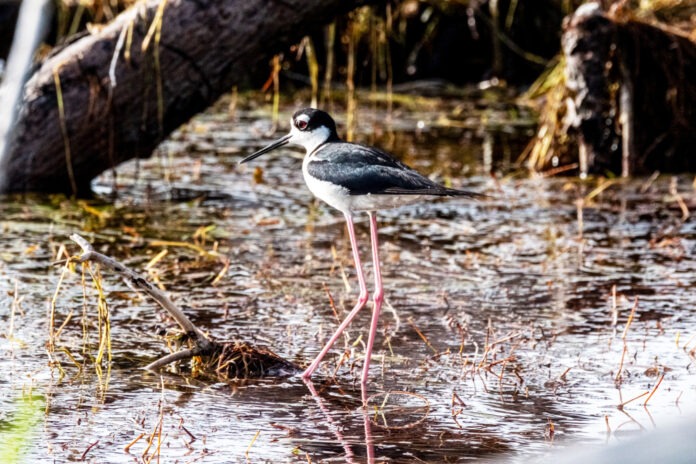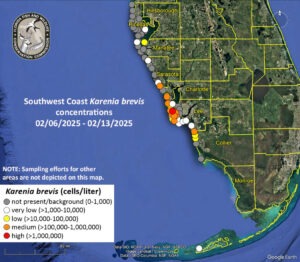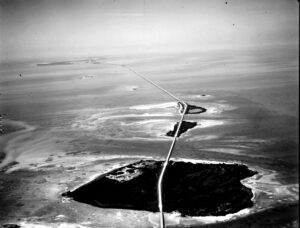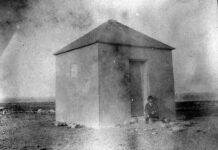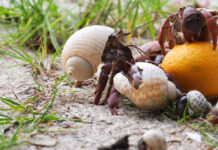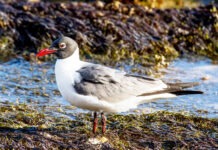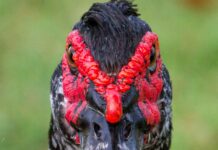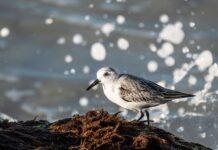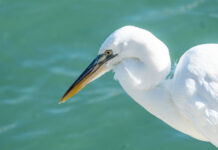I can’t get over the length of black-necked stilts’ legs. They’re incredibly long in proportion to their body – hence the name. Your average black-necked stilt stands a little over a foot tall. Eight inches of that are their legs, which are also bright red and so skinny they look to be made of coat hanger wire.
Whenever I see them I go through a brief phase of disbelief. You’re telling me there is muscle and bone and sinew in something that long and thin, not to mention nerves to relay messages from the brain to the feet?
No. Not possible. I don’t believe you.
There’s an oft-quoted F. Scott Fitzgerald line: “The test of a first-rate intelligence is the ability to hold two opposed ideas in the mind at the same time, and still retain the ability to function.” So if, rationally, I know there somehow is muscle, bone and sinew in the legs of black-necked stilts, but also, I still don’t believe it, I must be some kind of genius, at least in Fitzgeraldian terms. (Any proposals for other methodologies to test my intelligence will be declined.)
I’m always surprised the stilt’s legs don’t snap like dried spaghetti any time they land. But an account in a 1970s edition of the ornithological journal “The Auk” offers a strange testament to the structural soundness of those legs. The journal describes, in great detail, a scene in the Everglades, where a great white heron snatched up a black-necked stilt by one of its legs and carried it, shaking it some, then flying with it, for a good 10 minutes before swallowing the bird whole.
The black-necked stilt’s bill is long and nearly as skinny as its legs. Whereas other shorebirds tend to probe into the mud to pluck out prey items, stilts grab insects and brine shrimp gingerly from the mud or the surface of the water. Their long legs allow them to feed in deeper water than most other shorebirds that are relegated to the water’s edge.
I saw my first black-necked stilt about 25 years ago. They are in the pantheon of birds that make me say wow every time I see one. It’s not just the slender legs and bill, but also the clean, graphically pleasing black above/white below plumage. They are amazingly nimble, stepping as lightly as any creature I’ve seen.
I’ve never seen them attacked by a predator, and have seen them divert the attention of predators. I witnessed it again the other day up on No Name Key, looking for, and failing to find, a particular rarity. So I drove down to the end of the road and made my way to a small, muddy salt pond. It was early, so it wasn’t too hot and the bugs weren’t too aggressive, and the light on the water made it feel like a tidy little oasis.
First, a tricolored heron flew in, then stood on the edge of the water like some kind of sentinel. The second bird I saw was a black-necked stilt. Out of nowhere, it flew straight up like a rocket, stopped flapping quickly, then landed on the edge of a small spit of mud 30 yards away. It started yapping, or more realistically, yipping, when it hit the apex of its ascent, making sure I watched it drop and land. Insistent yipping gave way to incessant yipping, with the bird making about three yips per second. It just kept going and going.
The Cornell Lab of Ornithology’s website Birds of the World – generally considered the most comprehensive collection of data and information about any species — notes, “After a day of field work near breeding stilts, the yapping echoes in one’s head until the next morning when the sound is renewed by the continuing calls of vigilant parents.”
’Tis the season for distraction displays, the time of year when parents of some nesting species perform a lot of theatrics to distract potential predators from their vulnerable offspring, and at first this seemed a classic one. I expected the stilt to droop a wing onto the ground and do the whole look-how-vulnerable-I-am routine.
But like all good performers, the bird had another move. It crouched down, its long skinny legs looking strangely awkward folded under its body, trying to convince me it was on a nest. (I keep wanting to refer to the bird as she, but you can’t tell the sex of a stilt by looking at it, and both genders of stilts brood the eggs and tend the young.)
It’s hard to say whether the stilt was trying to distract me from eggs or chicks. The eggs tend to be camouflaged and difficult to see from a distance. The chicks are precocial (hatched or born in an advanced state and able to feed themselves and move independently almost immediately, according to Google). They leave the nest within a day and innately know to hide when their parents go into distraction mode.
Black-necked stilts are only known to produce one clutch of eggs a year, though, and it’s pretty well into summer, so odds are the stilt was trying to distract me from chicks.
Years ago I was leading a group of bird photographers on a trip through Trinidad and Tobago when we stopped at a golf course to take pictures of some southern lapwing, one of which started flying around, buzzing us, then landing and dragging a wing, making a lot of noise, then taking off to buzz us again. When it finally dawned on me it was a distraction display, I told the group we were stressing out the lapwing and should leave. Nearly everyone nodded and got back into the van. Except for one guy, who thought himself the dean of bird photography, having started in the pre-digital era. When I again suggested we get in the van, he literally started jumping up and down and stamping his feet, cursing me out à la Yosemite Sam, throwing a tantrum because I was ruining his photography experience. It was kind of physically impressive for a man of his years, but I vowed never to be anything like him.
So on No Name Key the other day, I stayed less than a minute after the stilt started its whole distraction display, maybe time for 100 or so yips. Then I turned and started toward the short coastal trail that led back to my car.
I was only about 15 yards away when the stilt flew over me, leaving a trail of yips, then landing on the sargasso weed, bobbing its head, trying to get my attention. Then its mate flew over, doing pretty much the same thing.
I raised my camera to take a couple shots of the ruckus, then continued on my way, the birds leapfrogging over each other to show me the way.












